Cream Puff Cheese Biscuits, also known as Gougere
One of the many cooking-related gifts I received for Christmas was a cookbook from my daughter’s elementary school. It was filled with recipes sent in from various students’ parents. Funny, I sent one in but don’t see it listed. Hmmm.
The recipes are all very simple, but you know they are exactly the recipes busy families prepare during the week. There are classics like Easy Shrimp Bake and Chicken Parmigiano, but there are a few more interesting-looking ones like Greek Quesadilla with Tzatziki Sauce.
One of the recipes my wife served over the holidays was for Cheese Gougere or Fluffy Biscuits. Gougeres are made from a thick paste that is also used to make cream puffs and éclairs. It’s called pate a choux, which is French for “cabbage paste.” When baked in a round form, the pastry resembles small cabbages.
By adding cheese to the “cream puff paste,” you now have gougere. The secret behind the gougere is when the dough bakes; the moisture in them becomes steam and causes the small drops of dough to swell. The exteriors turn golden brown, but the interiors become hollow.
We had a little problem with our Gougere. When we removed them from the oven, the puffed-up pastry fell. They still tasted great, but something was lost in the presentation. You can see what I mean in my photo. Not sure why they collapsed, but next time, I will add to the cooking time and see if that helps. Any suggestions would be appreciated.
What Are Gougères?
Cheese Gougères are delightful French savory pastries made from choux pastry dough mixed with grated cheese, typically Gruyère cheese. These light and airy puffs are often served as appetizers or snacks and are popular in French cuisine.
Gougères can be flavored with various herbs and spices, and they have a crisp exterior with a soft, hollow interior. They are often served warm and are perfect for accompanying a glass of wine or as a party snack. Gougères are relatively easy to make but require some technique to achieve the perfect texture and rise.
History
The history of cheese gougères traces back to France, where they originated. The word “gougère” itself is believed to have derived from the Burgundian dialect word “gouge,” which means “a throat.”
Gougères are thought to have been created in the Burgundy region of France, particularly around the town of Nevers, which is known for its culinary traditions. They are closely related to traditional French choux pastry, which is the same dough used to make profiteroles, éclairs, and cream puffs.
The use of cheese in gougères likely evolved over time as cheese-making became more prevalent in the region. Gruyère cheese, with its nutty flavor and melting properties, became a popular choice for adding flavor and richness to the pastry.
Historically, gougères were often served during wine tastings and events in Burgundy, pairing well with the region’s renowned wines. Over time, they gained popularity throughout France and internationally, becoming a beloved appetizer and snack enjoyed in homes, bakeries, and restaurants worldwide.
Today, gougères remain a staple of French cuisine, appreciated for their delicate texture, rich flavor, and versatility. They are often served at gatherings, parties, and special occasions, continuing to delight French locals and enthusiasts of French gastronomy around the globe.
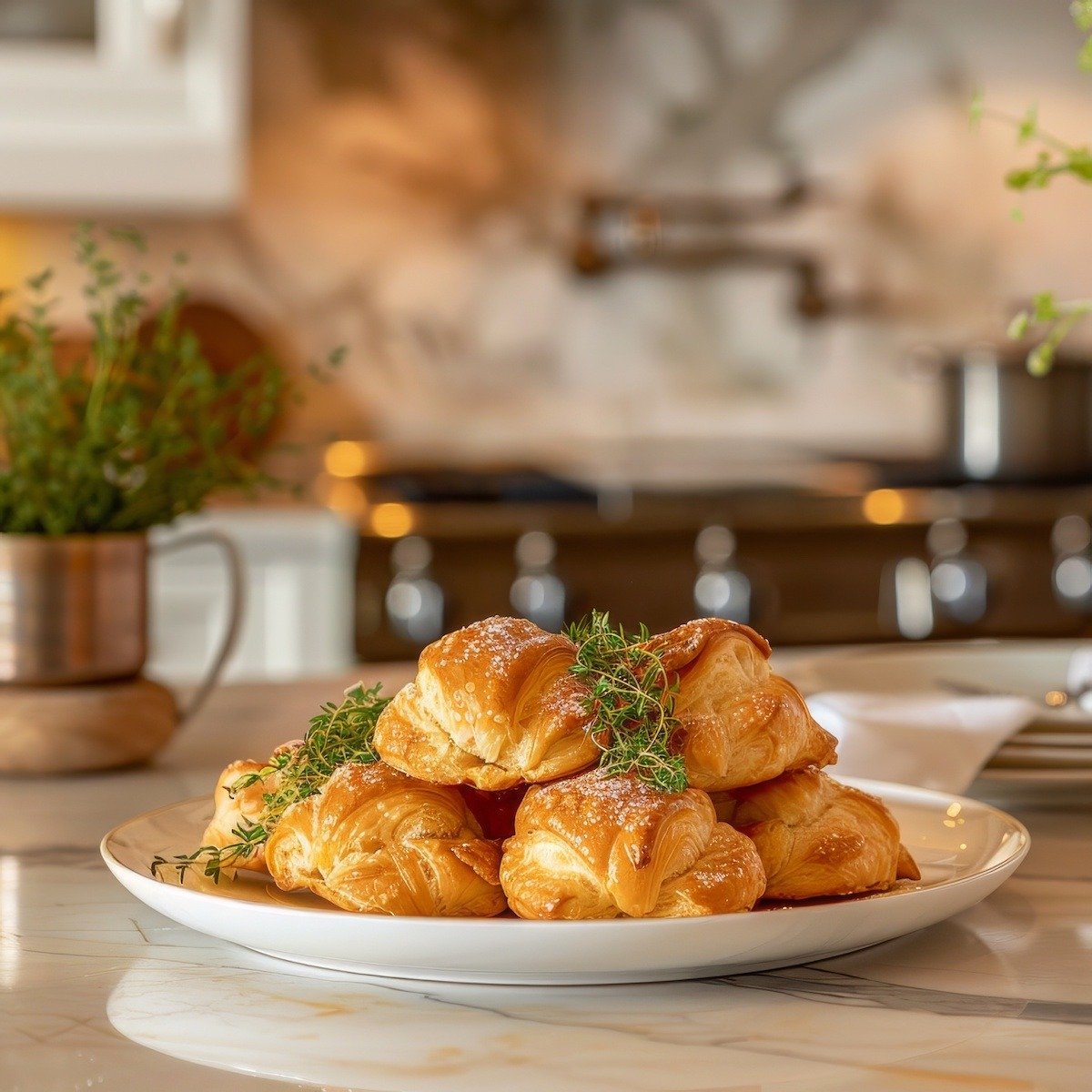
Cream Puff Cheese Biscuits also known as Gougere
Ingredients
- ⅔ cup water
- 6 tablespoons butter cut into pieces
- ⅔ cup flour
- ¼ teaspoon salt
- 3 large eggs
- ½ cup Swiss cheese finely diced
For the Egg Wash
- 2 egg yolks
- 2 teaspoons water
Instructions
For the Puffs
- Adjust the oven rack to the lower third of the oven. Preheat the oven to 400° F. Always add an additional 5 minutes when you think your oven is at temp.
- In a saucepan, bring the water and butter to a rolling boil and immediately remove it from heat. Immediately add the salt & all the flour while continuously stirring with a wooden spoon until blended and a thick paste forms in the shape of a ball.
- Return the pan to a medium-low heat for about one minute or until the pastry leaves the side of the pan. This helps remove any additional moisture. Be sure to keep stirring.
- Remove the paste from the heat; transfer it to a mixing bowl and using a wooden spoon, stir in the eggs one at a time until the dough is smooth and glossy.
- Blend in the cheese until it is completely incorporated into the dough. The consistency should be stiff but still allow you to dollop it from a spoon.
- Using a pastry bag if you have one or just a spoon if you don't, make 1-inch diameter dollops of dough to form a ring being sure the sides of the dollops are touching.
For the Egg Wash
- Whisk the yolks and water together until smooth.
- Using a pastry brush, paint each puff with a little of the egg wash.
- Bake 20 to 30 minutes until the dough puffs up and they are golden in color. Once golden, turn off the oven and let the Gougere sit in the oven for an additional 10 to 12 minutes.
- Remove from oven and loosen the puffs with a spatula. Serve warm.

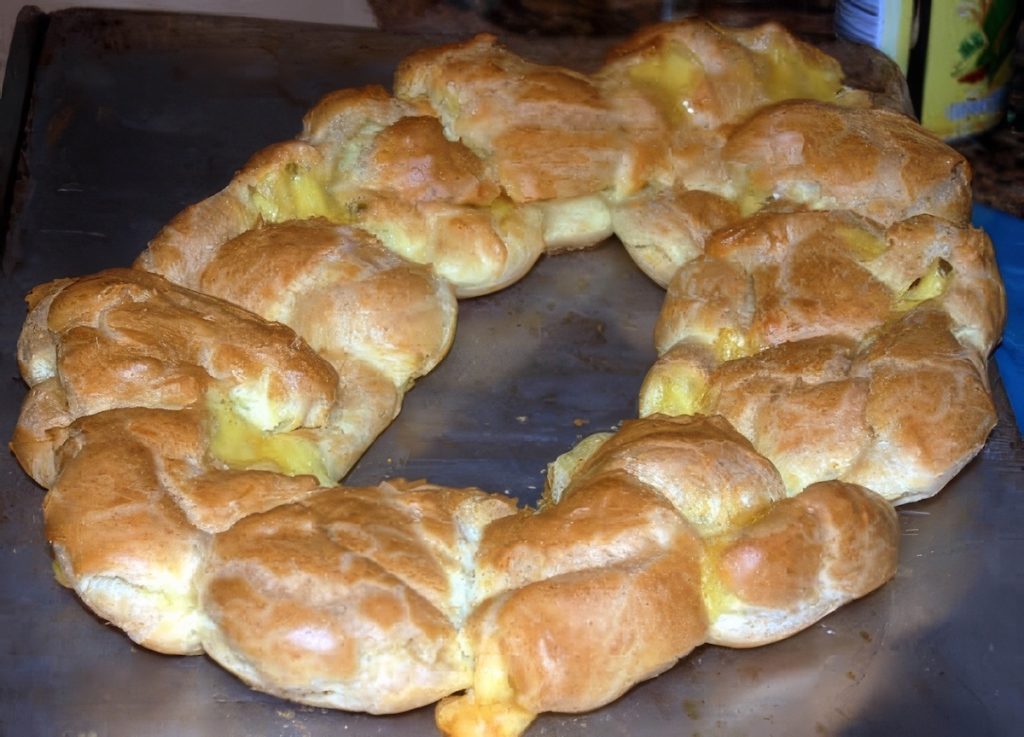
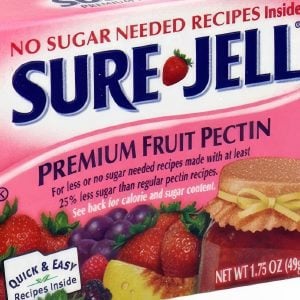


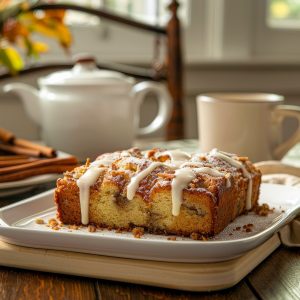
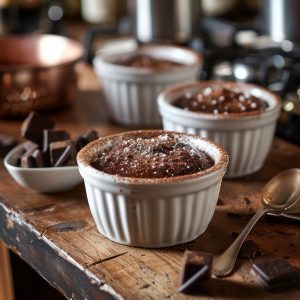

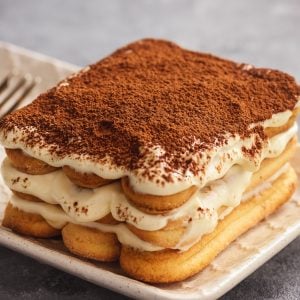
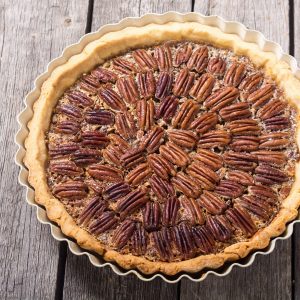

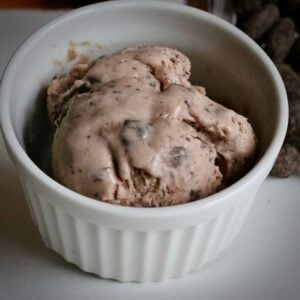


7 Responses
Re; the Gougere – what cheese would you substitute for Swiss? I am not a fan of cold Swiss – does the flavor change much when it’s warm?
Thanx!
I asked my friend Chef Ricco and he said, ” there is a cheese called Fontina Val d’Aosta made in Italy, it is a cooked cheese made from ewe’s milk. They make this cheese soft or hard. Then there is one made in the States called Fontina, American made with cows milk made in soft or hard. And yet there is a thrid one called Fontal from Italy, this is made from cow’s milk, it’s softer and less ditinctive that the Fontina Val d’Aosta. All these cheeses are a better choice than Swiss cheese and I’m not just saying that because I’m Italian.
Gougere is intended to be made with Goyere, a french cheese, but any hard, strong cheese will work. I often use parmasian because goyere is $15 a pound in america
Dan says that Gougere is intended to be made with Goyere, it’s really Gruyere, and this cheese is a Swiss cheese, some is made in France, it is a cooked cheese made with cow’s milk like the Fontina, but by no means is it a hard cheese, it’s only takes 6 months to mature. And for the record, Gougere was traditionally made for wine tastings in Burgundy, and we all know that you don’t use strong cheeses at wine tastings.Â
Here’s what happened to your gougeres: They fell because their little sides weren’t yet firm enough to hold them up. When you bake gougeres in separate little blogs (rather than in a ring as in your picture) they bake for about 20 minutes at 400 or so degrees and then another 30 or so at about 325. The higher temp allows for optimum steam production and puffs them, and the lower temp “sets” the sides and leaves them crispy so they can support themselves. Don’t open the oven until the last 10 minutes or so at the lower temp. Check them by gently squeezing the sides. If they mush in when you squeeze, they have longer to bake. They should be firm when you squeeze them. Also, add in the eggs using a stand mixer–using a spoon alone will just give you blisters (I know from first-hand experienc) and won’t whip up the mix enough.
yummy
I’ve made something like these in the past and put a little bit of water on the tray to give a bit more steam